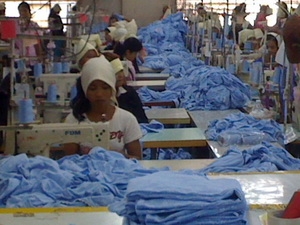Ecotourism in Cambodia up 9.7 per cent
Ecotourism in Cambodia up 9.7 per cent
Ecotourism sites in the northeast of Cambodia last year saw visitor growth of 9.7 per cent – a total of 53,374 tourists – compared with 2011, an official said yesterday during the first Workshop on Northeast Ecotourism Development, organised by the Ministry of Tourism.
Up to 400 people from the government, private sector, local and international NGOs, and ecotourism sector participated in the workshop.
Ecotourism allows tourists to visit fragile, relatively undisturbed natural areas and is intended as a low-impact and small-scale alternative to mass tourism. It often aims to educate participants, provide funds for ecological conservation, and empower local communities.
Tith Chantha, director general of the Ministry of Tourism, said, “The northeastern area can attract about one million international tourists, while national tourists would reach five million by 2020.”
The four northeastern provinces have considerable potential to develop ecotourism in the future, Chantha said, adding that the Irrawaddy dolphins are of particular interest to tourists.
According to Minister of Tourism Thong Khon, four community-based ecotourism sites are located in Stung Treng, seven in Ratanakiri, eight in Mondulkiri and six in Kratie province. Cambodia has a total of 56 ecotourism sites.
“The northeastern region has high potential in ecotourism development,” Khon said.
He said Kratie was the centre of ecotourism development in 2012, with 19,717 international tourists – a rise of 14 per cent compared with 2011.
The jump was largely due to the Spain-funded Mekong Discovery Trail project. Most of the ecotourists come from France, China, the United Kingdon, Germany, Vietnam, Australia, the Netherlands, the United States, Switzerland and South Korea.
According to tourism officials, Cambodia received about 3.58 million international tourists last year, a year-on-year growth of 24.4 per cent.
The number of domestic tourists reached 8.2 million, a three per cent rise from the previous year.
The Cambodian tourism sector contributed about 12 per cent to the Kingdom’s gross domestic product in 2012, a total of $2 billion.
Khon expects about four million international tourists will travel to Cambodia in the coming year and said this figure would grow to five million by 2015. He added that the tourism sector provides about 350,000 direct jobs across the country.
The UN World Tourism Organization’s (UNWTO’s) “Sustainable Tourism for Eliminating Poverty” initiative uses tourism as an engine for fostering socio-economic development, particularly at the grassroots community level.
Harsh Varma, director of technical co-operation and services at the UNWTO, said during the workshop, “Mekong river dolphins are a unique product which has an appeal for a wide cross-section of domestic, regional and international markets.
“The Mekong river, the dolphins, the local communities on the trail and their varied cultures and traditions, and the rich ecotourism resources of the [provinces Kratie and Stung Treng], offer opportunities for creating mighty attractive tourism products.”
Touch Sang Tana, secretary of state for the Council of Ministers and director of the Mekong Dolphin Conservation and Development Committee, said that the Mekong Dolphin population is still threatened by local villagers’ fishing activities.
Officials have employed 80 river guards along the Mekong from Stung Treng to Kratie.
However, the decrease of cassava harvests in 2012 has made it more difficult for officials to stop villagers from fishing.
While officials promote the region’s tourism opportunities, the private sector is concerned that the hospitality and services sector remains a challenge for the region.
Say Bunly, co-ordinator of the project Tourism for Help that runs Le Tonle Tourism Training Centre in Stung Treng, said there is only one tourism-geared training centre for human resources in the four provinces of Stung Treng, Ratanakiri, Mondulkiri and Kratie.
“There is an extreme lack of human resources in this field because only 18 young people can be trained each year in this centre under the funding of Switzerland,” he said, adding that stakeholders should focus on training as well as infrastructure.
Varma said, “While a lot has been done, a lot still remains to be done.”
phnom penh post
















